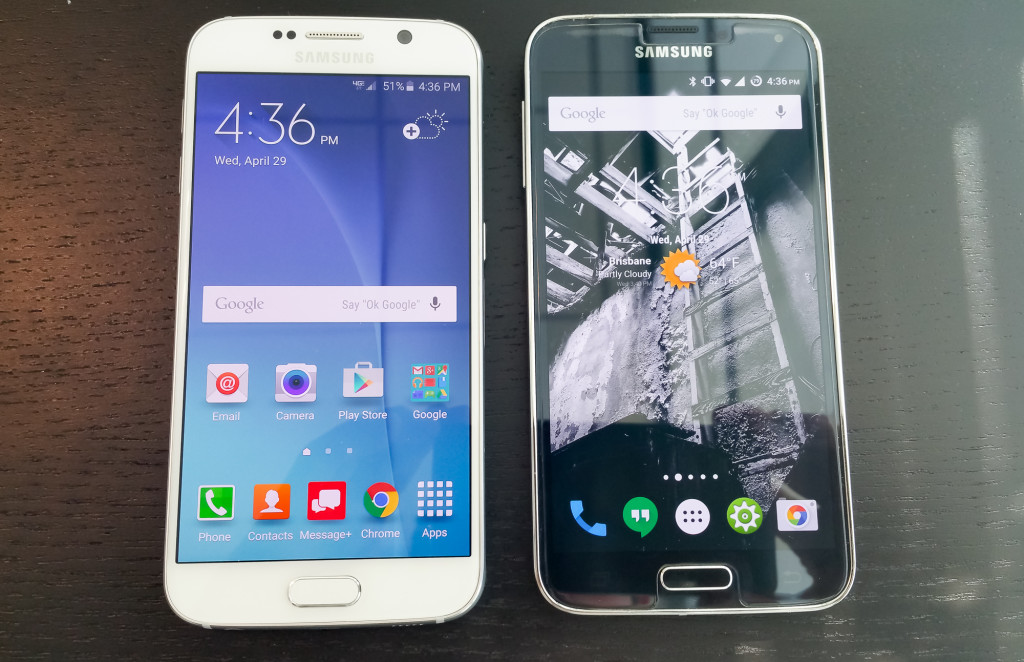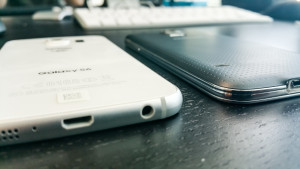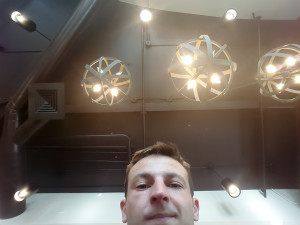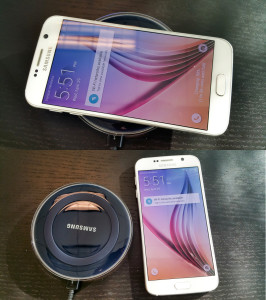In this post, I compare the Samsung Galaxy S6 SM-G920 (Release date: April 2015) against the Samsung Galaxy S5 SM-G900 (Release date: April 2014).
Notes:
I’m not trying to compete with dedicated phone review websites, rather I just
wanted to share my two cents on how these two phones compare. Also, I currently own an S5 since it was released last year, and the S6 device I refer to in this post is one I snagged from work to test out.

First Impressions of the Galaxy S6
My initial reaction to unboxing this phone at work was, “wow, this is a nice phone!” I was surprised yet saddened at how much it resembles an iPhone. The S6 feels more solid (build wise) in my hand, yet the glass casing gives the phone seemingly less gripping power than the perforated material on the back of the S5.
Form Factor / Phone Features
The lack of user replaceable external storage is a concern, as you are forced to by the larger GB version “just in case”. I’m sad to see Samsung try to be more like Apple in this way. The main selling points on my S5 was the removable battery and SDcard, which are no longer available in the S6.

Several things moved around on the outside of the phone. The headphone jack is moved to the bottom of the phone (from the top), enabling the potential to create better stands and docks for the phone. The speaker is moved to the bottom as well. The power button is moved farther down the side of the phone compared to the S5, initially confusing the muscle memory I had made from using my phone, but it does feel better with one hand.
Also, I’m not sure why Samsung decided to revert back to a micro usb 2.0 over the
micro usb 3.0 connector, maybe cost. I also notice the USB connection setting (connect as: Media, Camera, Installer) keeps getting reset everytime I plug and unplug the phone to my macbook.
Weight / Size
The S6 is noticeably lighter than the S5, even though it has more glass and metal on the case, and it’s also a tad thinner and smaller. The difference is slight, but still noticeable. I was expecting a larger phone for a successor. This is probably due to the way they could design the phone without the need for removing the battery or SDcard, and it increases the likeliness you will not try and extend the life of your phone, and just upgrade to the Galaxy S7 sooner 😉 .
Screen
Both phones have a 5.1-inch Super AMOLED touchscreen, but of course, the S6 has upgraded specs:
S5 = 1920×1080 (~432 ppi pixel density) Gorilla Glass 3
S6 = 2560×1440 (~577 ppi pixel density) Gorilla Glass 4
The extra resolution is useful for virtual reality applications like the Gear VR, but probably not beneficial for everyday use. Side by side (with the same apps open) the screen real estate seems about the same on both phones (you see about the same amount of
content), even though they are at different resolutions. This could be due to a different virtual resolution (ro.sf.lcd_density = 480 vs 640).
The brightness and contrast is a bit improved, and that can improve daily use. Just a few minutes using the phone and you will notice it has a nice vivid screen. The amazing screen and the upgraded camera alone are the main reasons why I personally would consider an upgrade.
Camera
Both phones sport a 16 MP, 5312 x 2988 rear camera. The S6 has gotten an aperture increase to f1.9, from the S5’s f/2.2. The new shortcut to launch the camera (double tapping home button) is nice and extremely quick. The S6’s camera launches super fast, and also takes pictures near instantly (low shutter lag). Here are a few test pics of the rear (normal) camera:




The front facing camera on the S6 has a tad wider-angle than the S5. Here are a few test pics of the front facing camera:


There are several modes built into the Samsung camera app, including:
Auto, Pro (manual), Selective focus, Panorama, Slow motion, Fast motion, Virtual shot. Here is a sample of the Virtual shot mode:
Also, you can actually download more effects from a Samsung Camera Mode store.
Hardware / Performance
| Galaxy S5 | Galaxy S6 |
|---|---|
| Chipset Qualcomm MSM8974AC Snapdragon 801 | Chipset Exynos 7420 |
| CPU Quad-core 2.5 GHz Krait 400 | CPU Octa-core, 2,100MHz, ARM Cortex-A57 |
| GPU Adreno 330 | GPU Mali-T760MP8 |
| Memory 2 GB RAM | Memory 3 GB RAM |
I haven’t personally ran any benchmarks, but from what I gather on the interwebs from people who have, the S6 is much faster all-round. I can say the phone “feels” a bit more snappy, even compared against a slimmed-down cyanogenmod install.
Stock apps / UI
TouchWiz on the S6 is way better than the default crap on the S5. The app drawer is much cleaner; though there is some bloatware, it’s not that bad and it’s contained to pre-organized folders. I’m glad to finally find Android 5.0.2 Lolipop as the default. I’d still put cyanogenmod on the S6, like I did my phone, but I think I could live with the new stock TouchWiz longer compared to what was on the S5.
Battery
The S6’s battery went down in size: S6 has a Non-removable Li-Ion 2550 mAh battery, while S5 has a removable Li-Ion 2800 mAh battery. Since this is a work phone and I
don’t use in the same way as my S5, I can’t be very accurate here, but the battery life on the Galaxy S6 seems be about the same, for moderate use.
It is very unfortunate that the there is no user replaceable battery; no more carrying around a spare when travelling.
The wireless charging built into the S6 is pretty neat; just place the phone on the charging pad and it starts charging automatically. I understand induction charging is much less efficient than a cable, but it seems to work pretty well and it’s pretty convenient.

Conclusion
Overall, I think the S6 is a decent improvement over the S5. I really hate the fact that Samsung modeled their flagship phone so heavily like the iPhone 6 (glass case, metal edge band, non-replacable anything, and bottom edge design).
The lack of removable storage or battery is, on paper at least, a deal breaker for me. Then again, the life cycle on phones these days (or at least the time one could withstand not upgrading) is short enough that by the time the battery fails or you want more storage, you’d probably upgrade your phone anyway.
I do like the upgraded camera and high-res vivid display very much. TouchWiz has improved and feels snappy, though I still prefer Cyanogenmod. Should you buy it? At full price, I don’t think it’s worth the money coming directly from an S5, but I’d still say it’s one of the best Android phones out there right now, and a worthy upgrade for most.
tl;dr;
Amazing camera, vibrant display, and fast hardware; Non-replaceable battery and non- upgradable storage.